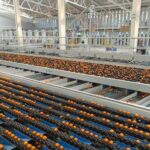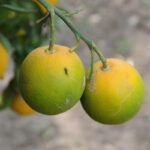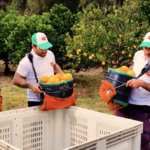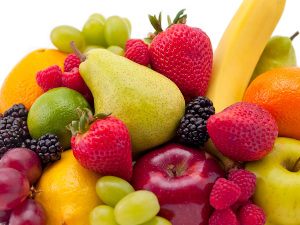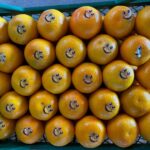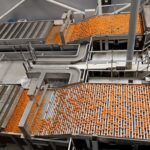Florida citrus groves selling to developers

Florida citrus growers have suffered devastating weather so many times in the last two decades that their valuable grove land is increasingly being sold to real estate developers.
Bloomberg reports this in an Oct. 16 story by reporter Ilena Peng.
She writes: “Florida’s farmers have spent nearly two decades fending off plagues, freezes and storms that decimated their orange crops. A growing number of them have had enough.
“A booming real estate market has led many to conclude it would be more profitable to sell their land than to continue to cultivate the Sunshine State’s signature fruit,” Bloomberg continues. “The number of acres dedicated to growing oranges in Florida has declined by more than half since 2000, to just over 300,000 this year, according to a preliminary US Department of Agriculture report.”
“It all comes down to economics,” Trevor Murphy, a third-generation grower in Highlands County, tells Bloomberg. Murphy recently sold some of his lower-yielding land, including 10 acres set to become a vacation home for a buyer from Miami.
Florida has been shifting away from its agricultural roots for years, driven by a changing state economy, swings in the weather and shifting consumer tastes. Citrus and Orange counties barely grow the fruits they were named after, and attractions like Walt Disney World sit atop former groves, Bloomberg notes. Yet the emergence of greening, an incurable bacterial disease caused by the invasive Asian citrus psyllid, has quickened the long-term erosion of the state’s citrus industry.
Greening has reduced Florida’s citrus production by 75% since 2005, according to the USDA, and the number of growers dropped by 62% from 2002 to 2017. Replacing diseased trees can take years, and for strapped farmers, selling land instead can help generate needed funds.
If a grower hasn’t had cash coming in for a couple of years, Murphy said, it “makes it a little easier to sell.”
Related articles: First Florida citrus estimate up 30% on last season
Drew Poston, a commercial real estate broker in Southeast Florida, said about half the property he sells is old citrus groves, mostly for single-family home construction, Bloomberg continues. One former 47-acre grove in Fort Pierce, about an hour north of West Palm Beach, recently sold for over $6 million. It will be developed into 165 home sites, Poston said. The grove had last produced oranges in 2004.
Housing demand and prices in Florida increased as people and businesses flocked south during the pandemic in search of lower taxes and warmer weather. The state had the fastest-growing population in the US last year for the first time since 1957 and overtook New York as the country’s second most valuable housing market this year.
With wealthier homebuyers driving prices up in coastal hotspots like Miami, development is pushing further inland as less well-heeled locals seek more affordable housing, says Redfin chief economist Daryl Fairweather. She said former orange groves are a logical place for development because sparsely populated agricultural land is cheaper and easier to build on.
Hendry and Collier counties, in rapidly developing Southwest Florida, together lost over 30,000 acres, a 33% decline, of their citrus land from 2020 to 2023, according to an August report from the USDA. In the same period, median home sale prices in Hendry County jumped 64%, according to Redfin data, while Collier County saw prices rise nearly 55%.
Bloomberg continues that hurricanes and a freeze last year added to the strain on Florida citrus production, causing estimated total losses of as much as $675.6 million for commercial producers. Some growers lost nearly their entire crop and still had to invest thousands of dollars an acre for the upcoming season, said Matt Joyner, the chief executive officer of Florida Citrus Mutual.
“You take a thin margin or no real return and throw a couple storms like that on it, and it can be very hard for a grower to stay in business,” Joyner says.
Florida’s climate yields fruit best suited to juicing, and the state is expected to produce 20.5 million boxes in the upcoming season, according to a USDA forecast released Oct. 12. That’s up from 15.8 million boxes — the state’s weakest harvest since 1937 — in the 2022-23 season, but well below past levels.
The recent turmoil has brought US orange juice stockpiles to the lowest level since 1968 as of the end of August. Orange juice futures, now trading above $3.80 a pound, are expected to stay high at least through the end of this year, and may hold above $2.80 a pound in early- to mid-2024, says Jack Scoville, a vice president at Price Futures Group Inc.
High prices could accelerate the decline of orange juice consumption, which has been weakening for years, as shoppers see the once-common breakfast drink as overly sugary.
For Florida’s citrus business to rebound, greening will need to be vanquished. Andres Padilla, a Rabobank senior analyst based in Sao Paulo, says the costs of maintaining groves, including pesticides, labor and machinery, are too onerous to be offset by high prices. Brazil is the largest producer of oranges, Bloomberg continues.
“Without any significant breakthroughs on the greening front, it’s going to be very hard to bring significant investment back,” he says. “An orange grove is a 25-year investment, so you’re not going to risk your capital on that if you know that there isn’t a cure or there is not a solution.”
That has implications for the state’s economy: The citrus industry, including production, manufacturing and marketing, added an estimated $6.94 billion in output and supported more than 32,000 jobs in the 2020-21 marketing year, the most recent data available.
Growers are hoping government aid via the Block Grant Assistance Act, which passed the U.S. House of Representatives in June, will alleviate some of the financial pressures they’re feeling. Researchers are also working on techniques to combat greening and breed a disease-resistant tree. But that may be too little, too late, says Malcolm Manners, a professor of citrus science at Florida Southern College.
“If you go out of business, you’re out of business,” Manners said. “The fact that they solve the problem five years from now doesn’t help you.”
Meanwhile, some farmers, like Tom Hurley, haven’t grown citrus in over a decade — and are looking to benefit from the housing boom however they can.
Hurley’s family began growing the fruit in the 1950s in Southeast Florida and once had more than 15,000 acres dedicated to oranges, grapefruit and mandarins. But the family company, Becker Holding Corporation, began selling land in the mid-2000s after grappling with citrus canker and greening. Much like now, housing prices were then soaring, making developers hungry for land. Hurley started a tree farm to cash in on landscaping demand.
By 2012, they had no citrus groves left, the Bloomberg story continues. Today, Becker is co-developing a residential community with up to 317 homes and a golf course in Martin County. Homes will start at an estimated $3 million, according to the company’s website.
“We would’ve liked to have a fairly large citrus part of our portfolio. I just think that it’s in our DNA, so if we had a choice, we’d rather have been farming some of it,” Hurley says. “The land that was in the path of progress at the time, it just made sense. Its best and highest use was not farming any longer.”
















